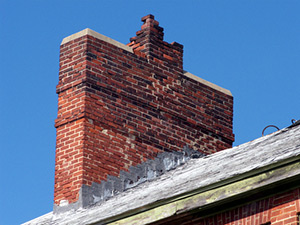
What Is Tuckpointing?
The most common cause of water getting inside of masonry work and creating damage is worn mortar joints. To prevent this from happening and to maintain the durability and water-resistant nature of masonry work, tuckpointing is required every so often. What is tuckpointing exactly? In simplicity, when the mortar joint of a brick becomes damaged, new mortar is ‘tucked’ inside of the damaged mortar joint. Tuckpointing is necessary at some point on all brickwork, and includes the actual process of taking out the old impacted mortar and replacing it with new mortar. Sounds simple, but it’s an extensive process that takes learned skill, patience and attention to detail.
Does Your Masonry Need Tuckpointing?
Any wear on your masonry structure is best caught early on before larger problems have a chance to develop. You should regularly check your masonry work for signs of abnormal defects.
A masonry surface likely needs tuckpointing if:
- You notice a whitish substance on the face of the masonry.
- You notice holes and gaps in the mortar.
- You notice cracks in the mortar.
Normally The need for tuckpointing can be identified with your bare eyes. A special tool can also be used to lightly scrape at the bricks and identify cracking or decomposing mortar. If you have an older building, you might need to clean the masonry work with low to moderate water pressure first to reveal the true appearance of mortar joints.
The Importance of Tuckpointing
Tuckpointing is considered a critical maintenance task. If cracking or crumbly mortar is ignored for too long water will seep in and do damage. While water is fundamental to our survival, it can also create a whole lot of damage to the structures we depend on. With time water will damage bricks, cracking them or causing them to completely come loose from the structure. (See More Here)
How Often Does Masonry Work Need Tuckpointing?
How often your masonry mortar joints need to be repaired is going to depend on a number of factors, largely including the type of weather a structure is exposed to. All masonry work will need to have mortar joints repaired at some point, usually around every 25 years or so. Most commonly this is done to protect bricks from acquiring water damage, although mortar joints that have nearly deteriorated can be fixed by tuckpointing. (Read More)
The Delicate Tuckpointing Process
To repair mortar, you will first need to remove the damaged portions, careful not to damage the brick wall in the process. You want to remove the right amount of mortar in consideration with how much new mortar you plan to reapply so that everything fits together as it originally did. Once the old mortar is cleared away and the space is cleaned and prepped, the new mortar can be added. Selecting the right mortar for your building is an important step in the tuckpointing process. You want to match your original mortar as closely as possible, in tone and strength. If your new mortar is stronger than the old mortar, a lot of concentrated stress will build up where the new mortar is, causing excessive wear on the bricks supported by the stronger mortar. This will potentially lead to irreversible damage, such as cracks in the bricks. A professional can use a number of tests to determine the exact mortar necessary to properly complete a job. http://homerepair.answers.com/repairs/tuckpointing-to-repair-mortar-in-brick-walls
The Origins of Tuckpointing
Often people become confused about tuckpointing procedures because they are called by a few different names and the actual process can vary. Tuckpointing can also be called pointing, and repointing. In general there are 2 types of tuckpointing, one includes making the illusion that there is a fine joint seam between bricks, even if there is actually a very large joint. This definition for tuckpointing shines light on its heritage, which dates back to the eighteenth century in England. Up until the end of the eighteenth century, larger mortar joints were popularly used in the construction of masonry buildings. Tuckpointing was originally established in order to imitate a new style of brick that hit the market. This brick was red, oversized and had very thin mortar joints. Tuckpointing provided a less expensive way for people to obtain this new look without changing the overall structure of a building.
Once the process of tuckpointing made its way into America, the uses and variations of tuckpointing changed. Today, the most common use of tuckpointing is to replace damaged mortar joints and prevent water damage. (Learn More)
For best results, a professional is recommended to diagnose and repair cracking or crumbling mortar joints. Turnbull Masonry knows bricks best, we provide professional tuckpointing you and your building can rely on.
